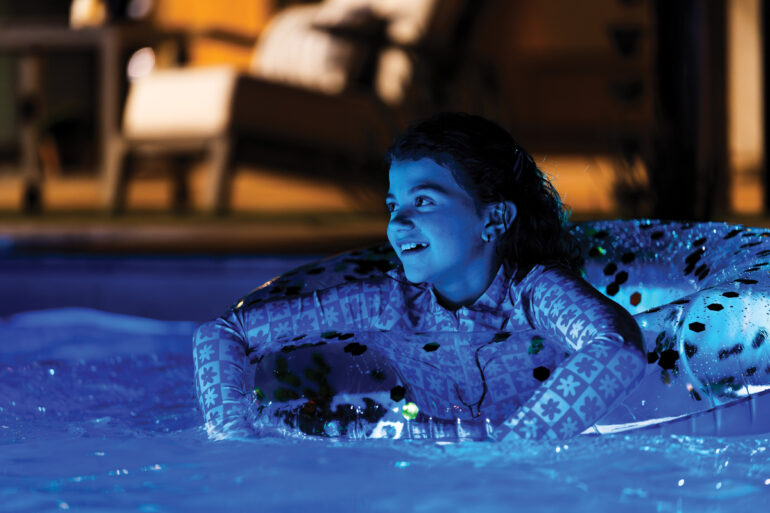TruClear — Clearly Improved
Jandy’s new saltwater chlorinator ups the education and cell life

Cell calcification is the most likely problem with a saltwater chlorinator. Jandy’s new Pro Series TruClear saltwater chlorinator tackles calcification from installation and education to cleaning any buildup.
“When you’re not cleaning [the chlorinator] properly the calcium buildup will kill the life of the cell,” says Amy Armstrong, product manager for water care at Jandy. “That’s why we’re putting a sticker on the front of the power pack saying how important it is to check and clean your chlorinator on a monthly basis. We’re trying to educate people.”
Jandy is targeting both the homeowner and installer with this education. In addition to the visible sticker reminding of the monthly check, it is including an Attention Installer envelope that contains three total-hardness test strips and reminds them it is imperative to balance the water before installing the chlorinator.
“The first thing [the installer] needs to do is test the water and make sure the total hardness is between 200 and 400,” Armstrong says. Imbalanced water is harmful to other equipment on the pad, not just the chlorinator, but once you go over that 400 mark there is a high likelihood calcium will build at a higher rate. And if it’s over 800? “Don’t install it,” Armstrong says, “because that means it’s completely out of whack. Ultimately, the chlorinator will work, but you’re doing a disservice to yourself and the chlorinator, because, especially if you’re not watching or cleaning it on a regular basis, the longevity of that cell will be shortened.” And at upwards of $400 to replace a cell, that’s not going to be a happy customer.
Jandy is even educating people on the quality of water in their region, and helping those in areas with hard water with auto reverse polarity recommendations. “We’re including a post card with a map of the areas known for hard water,” Armstrong says. “If you live in one of those areas, your TH is 400 ppm or more, we recommend that you change the reverse polarity from a five hour default to three hours. That changes the direction of the water and helps to keep that calcium from sticking on the blades.”
To see if there is buildup on the cell blades, look through the UV-coated window. “Sometimes when things are out in the sun, the sun can brown them,” Armstrong says. “We’ve got UV inhibitors in the inspection window so that it will remain clear for years.”
When comes time to clean the cell this process has been simplified with TruClear. “We’ve seen with other chlorinators on the market that cleaning is not always easy to do,” Armstrong says. “Sometimes [the technician] has to pour the acid solution in the unit itself and it could tip over.”
Without any tools, twist the top of the cell a quarter turn and lift it out. Jandy added a cord that can be used to drop the cell in and pull it out of the cleaning solution. “It’s very easy for them to mix the cleaning solution in a bucket and drop the cell in with the cord,” Armstrong says.
TruClear comes in two versions: one intended for new construction that can be plumbed into the equipment pad, and one that can be installed onto existing equipment pads using unions. The retrofit version with unions is 12 inches, which is small but the same size as Jandy’s AquaPur model. The new construction version of the TruClear is 8 inches. “When you don’t always have a lot of space on the pool pad that’s nice to have,” Armstrong says.
For pools that have variable-speed pumps, TruClear ensures that they can continue to run at peak efficiency. “It runs at 20 gpms,” Armstrong says. “So it’s low flow sensing in operation and very energy efficient. In areas of the country where VSP are popular, [customers] are not happy they have to run it at a high gpm in order to get the chlorinator to work.”
The flow sensing mechanism on the TruClear is a gas trap, as opposed to a flow switch, which Armstrong says makes it maintenance free. “There are no moving parts that may need to be replaced,” she says.
TruClear is also constructed with the Jandy Never Lube Valve material, which Armstrong says is synonymous with being durable. Jandy uses CPVC (chlorinated polyvinyl chloride), instead of just PVP (polyvinyl chloride), which can withstand very high temperatures. TruClear is part of Jandy’s Trade Series program, which means it can’t be sold online and






